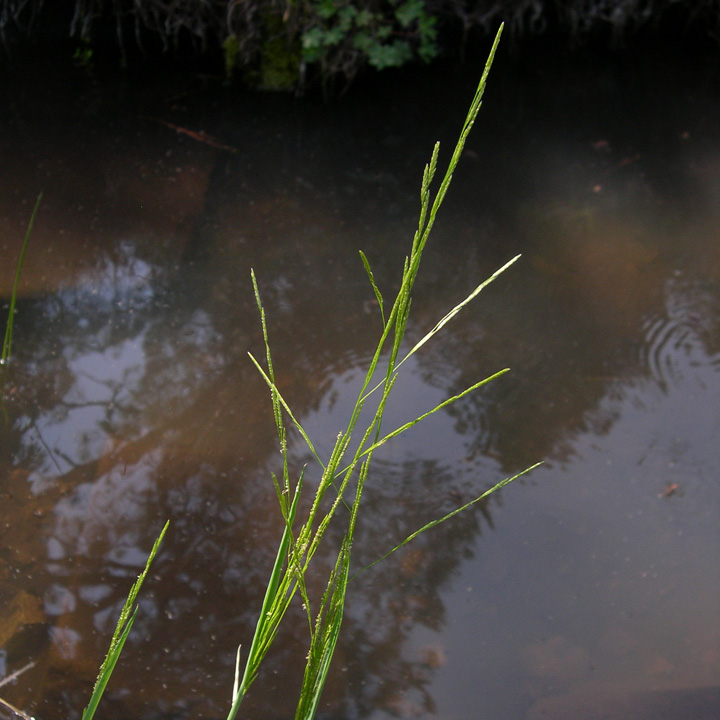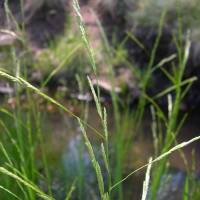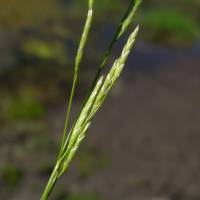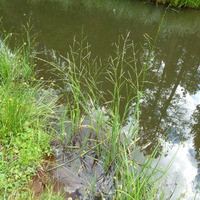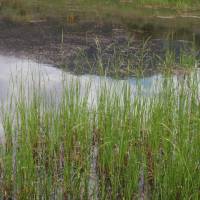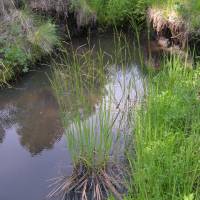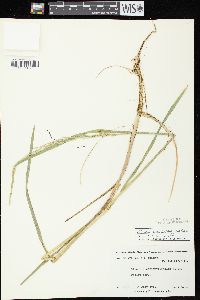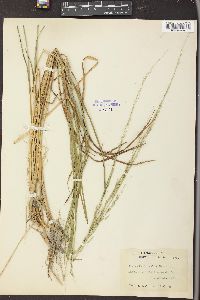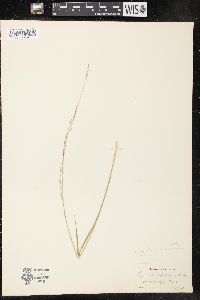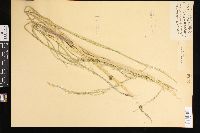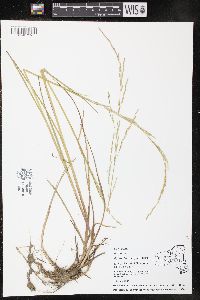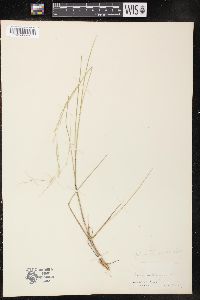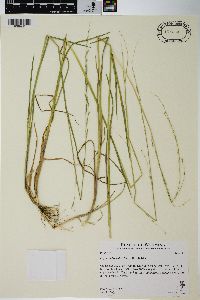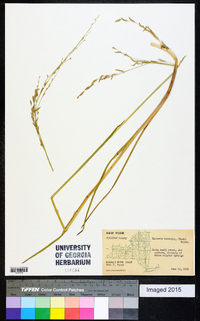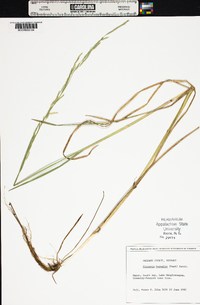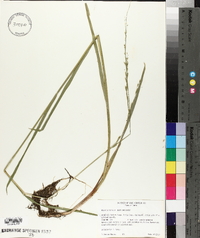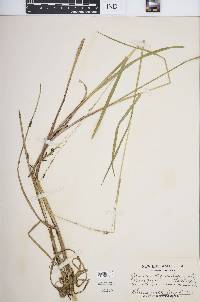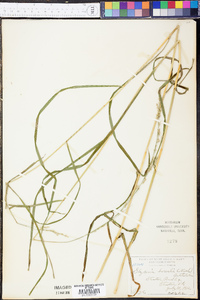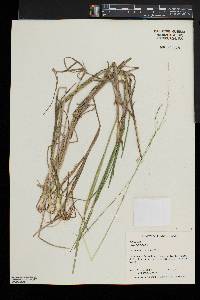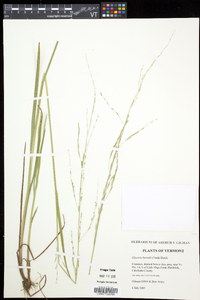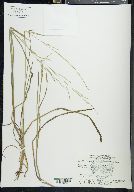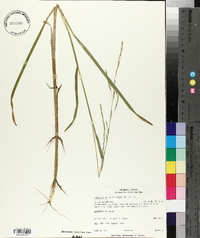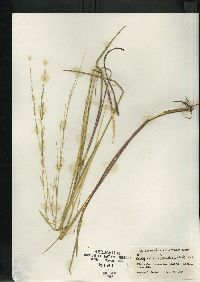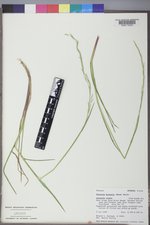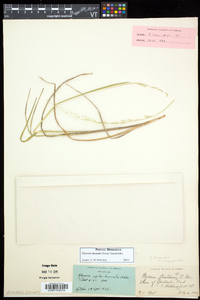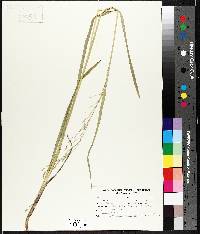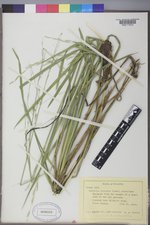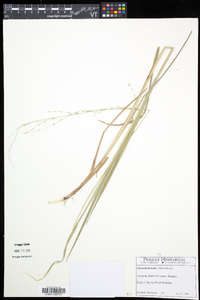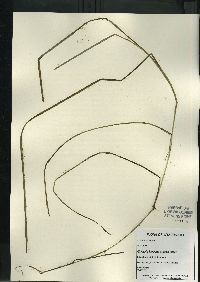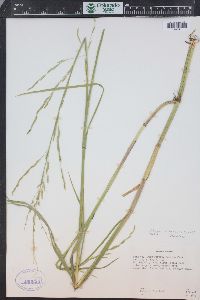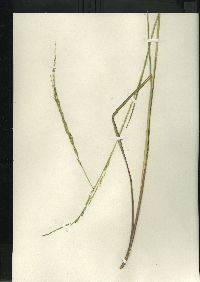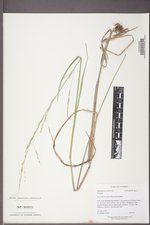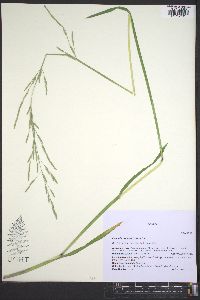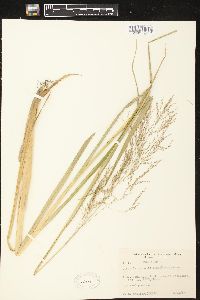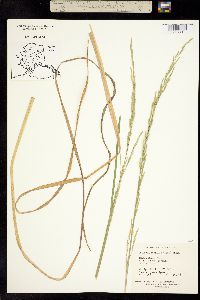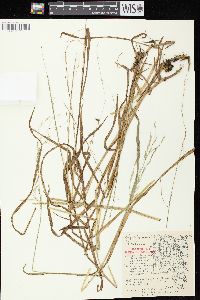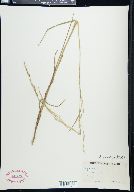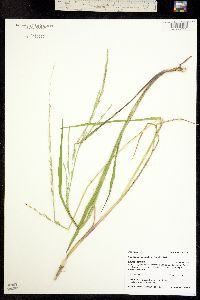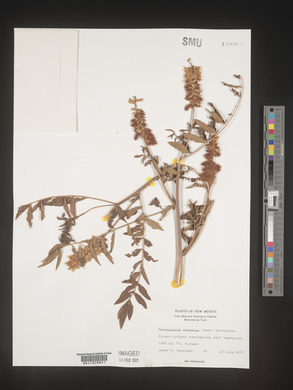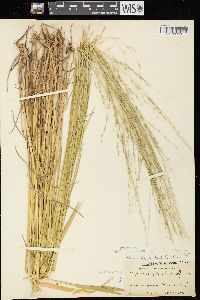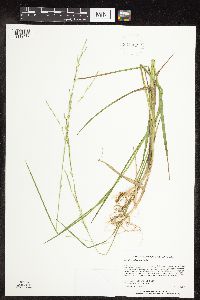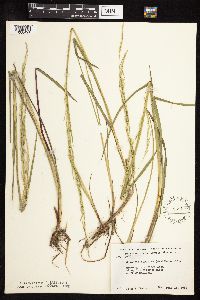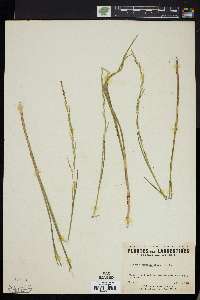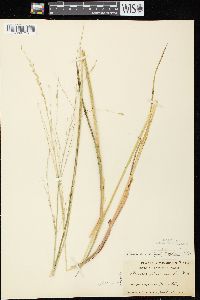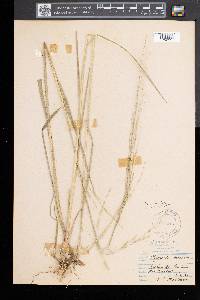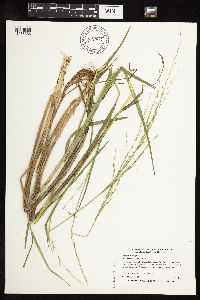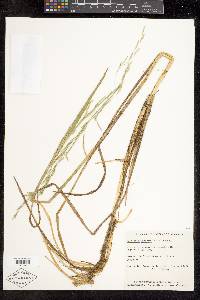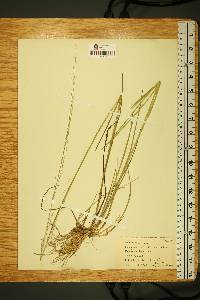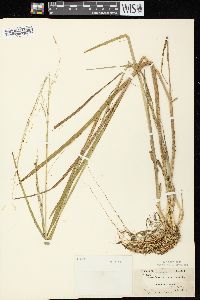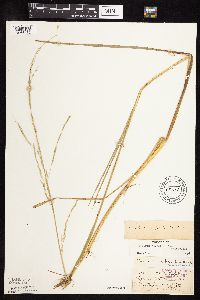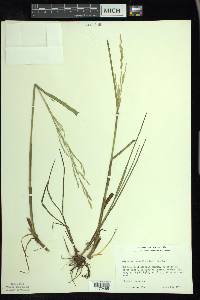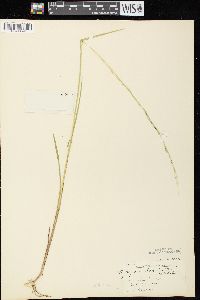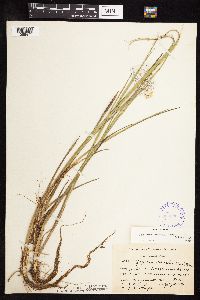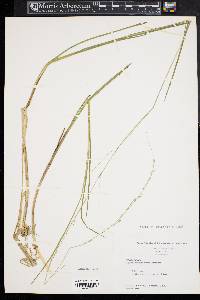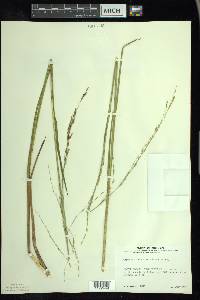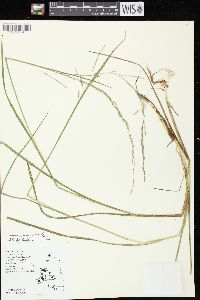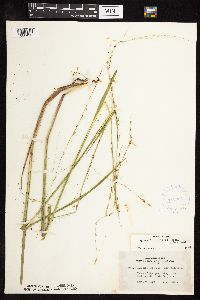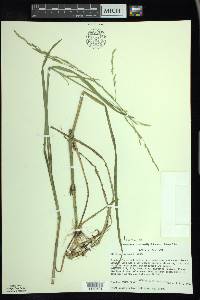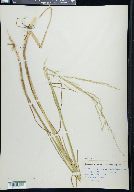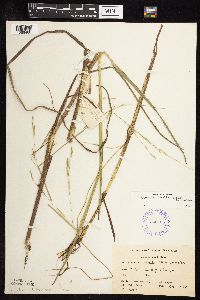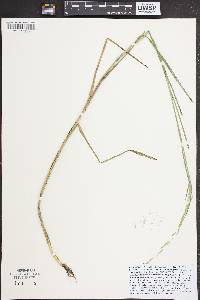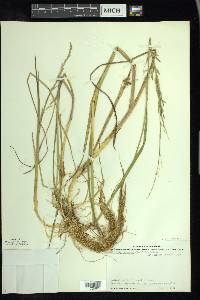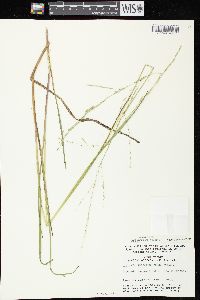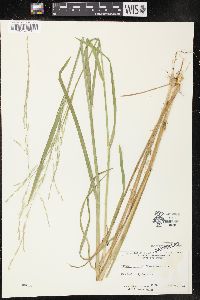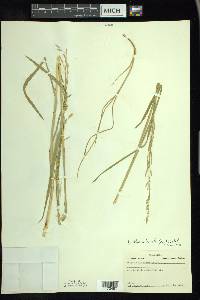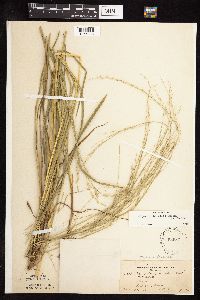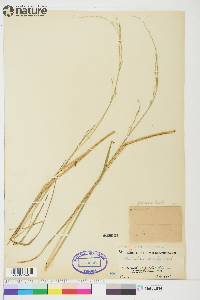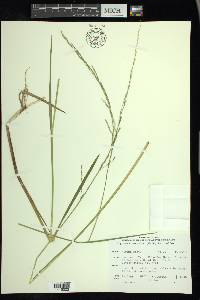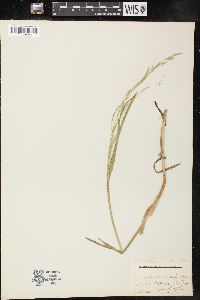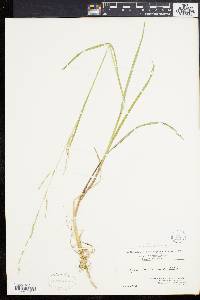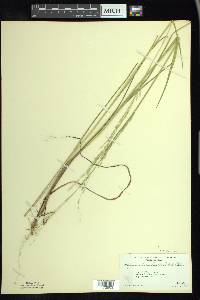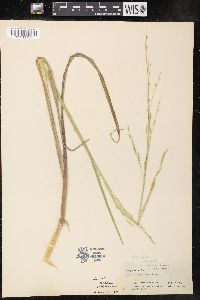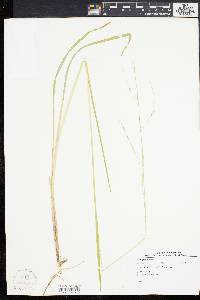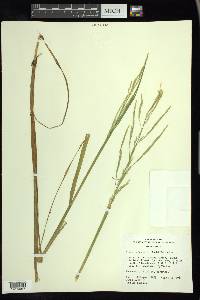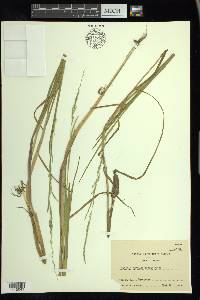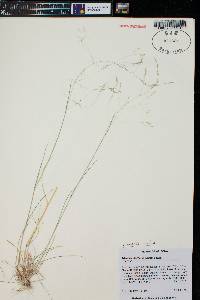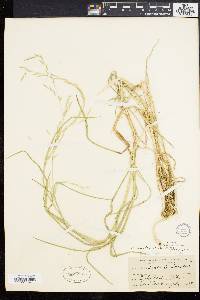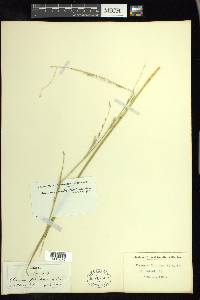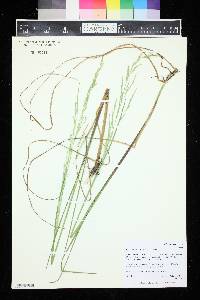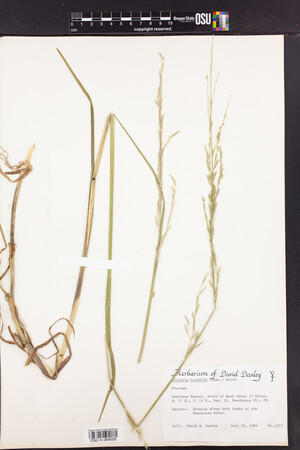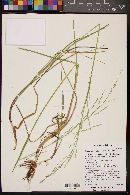
|
|
|
|
Family: Poaceae
Small Floating Manna Grass, more...small floating mannagrass, northern mannagrass, Boreal Glyceria, Boreal Mannagrass, Glycerie Boreale
[Glyceria fluitans var. angustata Vasey ex Fernald, morePanicularia borealis Nash, Panicularia fluitans var. angustata (Vasey ex Fernald) Vasey ex Farw.] |
Plants perennial. Culms 60-100 cm tall, 1.5-5 mm thick, often decumbent and rooting at the lower nodes. Sheaths glabrous, keeled; ligules 4-12 mm; blades 9-25 cm long, 2-7 mm wide, often floating, abaxial surfaces smooth, adaxial surfaces of the midcauline leaves densely papillose, glabrous. Panicles 18-40(50) cm long, 0.5-2(5) cm wide, arching, usually narrow, open at anthesis, bases often enclosed in the upper leaf sheath at maturity; branches 5-10(15) cm, usually 1-3(5) per node, usually appressed to strongly ascending, occasionally spreading, longer branches with 3-6 spikelets; pedicels 1.2-5 mm. Spikelets 9-22 mm long, 0.8-2.5 mm wide, cylindrical and terete, except at anthesis when slightly laterally compressed, rectangular in side view, with 8-12 florets. Glumes elliptic, apices rounded to obtuse, sometimes erose; lower glumes 1.2-2.2 mm; upper glumes 2-3.8 mm, rounded; rachilla internodes 0.6-3.5 mm; lemmas 2.7-5.4 mm, veins raised, scabridulous or smooth, intercostal regions usually smooth, sometimes scabridulous, midvein terminating about (0.1)0.2 mm short of the apical margin, apices usually acute, sometimes obtuse, entire or almost so; paleas usually shorter than to equaling the lemmas, sometimes exceeding them by up to 0.5 mm, keels narrowly winged, apices bifid, teeth to 0.2 mm, parallel to weakly incurved; anthers 3, 0.4-1.5 mm. Caryopses 1.2-2 mm. 2n = 20. Glyceria borealis is a widespread native species that grows in the northern portion of the Flora region, extending southward through the western mountains into northern Mexico. It grows along the edges and muddy shores of freshwater streams, lakes, and ponds. In the southern portion of its range, G. borealis is restricted to subalpine and alpine areas. The midcauline leaves of G. borealis almost always have densely papillose upper leaf surfaces. Voss (1972) stated that such surfaces are non-wettable and develop on the floating leaves. Glyceria borealis differs from G. notata in having acute lemmas and, usually, densely papillose midcauline leaves. FNA 2007, USDA, Field Guide to Forest & Mtn. Plants of N AZ 2009, Ann. Checklist GCNP 1987 Common Name: small floating mannagrass Duration: Perennial Nativity: Native Lifeform: Graminoid General: Rhizomatous, tall with thin stems 80-150 cm tall, which may be erect or decumbent, or float on bodies of water; with a narrow, long panicle. Inflorescence: Panicles 18-40 cm long, 0.5-3 cm wide, narrow and arching, with few and widely spaced branches; branches 5-10 cm long, with 1-3 branches per node, usually against the stem or strongly ascending; spikelets 9-22 mm long, with 8-12 florets; glumes elliptical, with rounded apices, 1-4 mm long; lemmas 3-5 mm long, smooth, lance-elliptical; anthers 3, 1 mm long. Ecology: Found along the edges of streams, lakes, and ponds, in meadows and other wet habitats at 7500-9000 ft. (2100-2700 m); flowers July-August. Distribution: Throughout the West, North, and Northeastern United States Notes: Glyceria borealis is similar to G. notata, but it differs by having lemmas that are acute and midcauline leaves that usually are densely papillose. G. borealis differs from G. grandis by having longer ligules (4-12 mm in borealis, 2-4 mm in grandis), more florets (8-12 in borealis, 3-6 in grandis), and larger lemmas (3-5 mm in borealis, 3-3 mm in grandis). Ethnobotany: Unknown Etymology: Glyceria is from Greek glykys for sweet, referring to the edible grains, while borealis means northern. Editor: LKearsley, 2012 Culms 8-12 dm, often decumbent and rooting from the lower nodes; lvs 2-5 mm wide; ligule 4-12 mm; infl slender, 2-5 dm, the branches 8-12 cm, each with several appressed spikelets; spikelets 1-2 cm, 8-12-fld, at first cylindric, the lemmas tending to spread at maturity; rachilla-joints 1-1.3 mm; glumes elliptic, rounded at the tip, soon scarious, obscurely veined, the first 1.1-2.1 mm, the second 1.9-3.3 mm; lemmas obtuse, scarious at the margins and tip, 3.1-3.9 mm, green and shining between the minutely scaberulous veins; palea not projecting; anthers 3, 0.6-1 mm; grain 1-1.2 mm; 2n=20. In shallow water and wet soil; Nf. to Alas., s. to Conn., N.J., Ind., Io., Nebr., and Calif. Gleason, Henry A. & Cronquist, Arthur J. 1991. Manual of vascular plants of northeastern United States and adjacent Canada. lxxv + 910 pp. ©The New York Botanical Garden. All rights reserved. Used by permission. From Flora of Indiana (1940) by Charles C. Deam This plant is doubtless very rare in Indiana. The habitat is the same as that of the preceding species [Glyceria pallida]. ...... Indiana Coefficient of Conservatism: C =10 Wetland Indicator Status: OBL |
|
|
|

